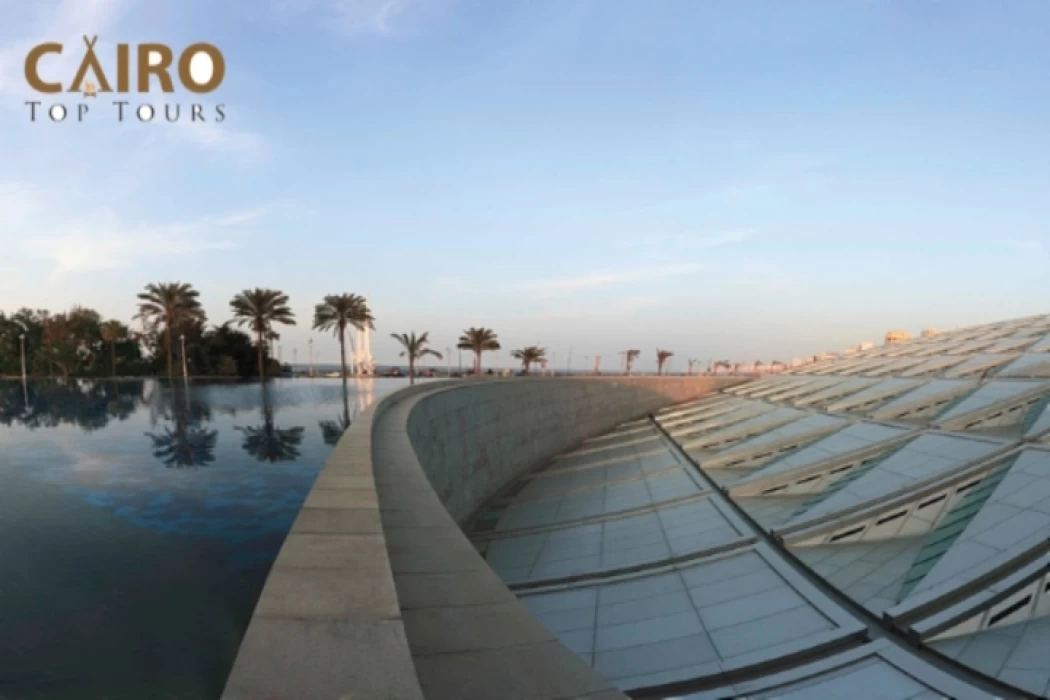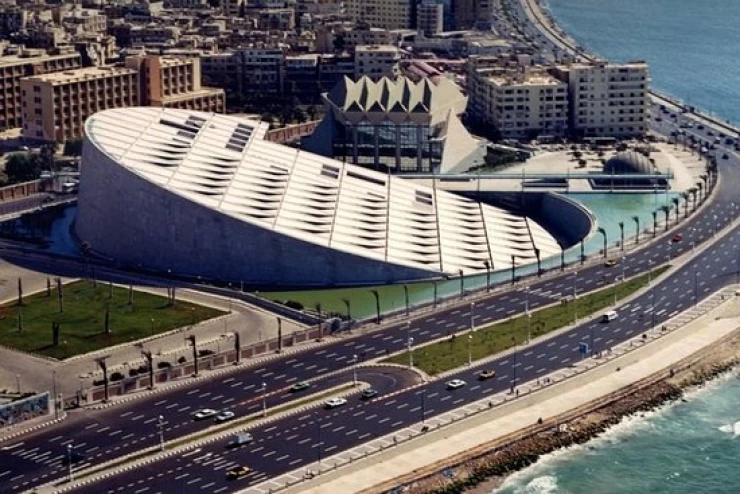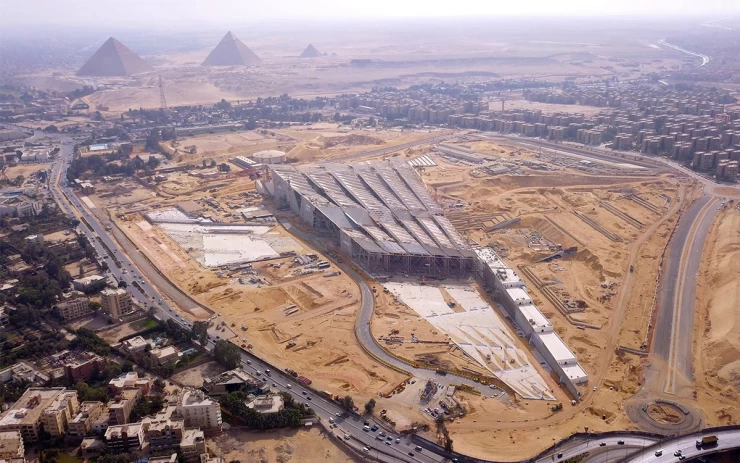
library of alexandria
bibliotheca Alexandrina
Called the Royal Library as well as the museum, this is the Library of Alexandria, the beacon of science and knowledge for the whole world, as it was the most comprehensive and largest for many centuries.
The Library of Alexandria was established in the era of the Ptolemaic state, which was part of the Macedonian Empire and emanated from Greek civilization. It is said that Alexander the Great was the first person who ordered the construction of the Library of Alexandria. Then came the decision to build the Library of Alexandria during the reign of Ptolemy I during the Ptolemaic rule of Egypt.
The real founder of the Library of Alexandria was Ptolemy II (Philadelphus), who ruled Egypt for 39 years from 246 BC to 285 BC. The Library of Alexandria continued to develop science and knowledge in ancient times and produced many scholars for 7 centuries.
Library fire
In 48 BC, Julius Caesar burned nearly a hundred ships on the shore of the Mediterranean Sea in front of the Library of Alexandria after Cleopatra's brother Ptolemy the Younger besieged him after he felt that Julius Caesar was supporting Cleopatra against him, and the fires of burning ships spread to the library.
The Library of Alexandria in the modern era
The Library of Alexandria was revived in the modern era after being left in ruins for centuries and considered a lost relic. The new Bibliotheca Alexandrina was built on the same site as the old library.
The height of the library is ten stories, and all lower levels are located below the surface of the water, and the body of the building sinks below the ground to protect its precious contents from the external environment, and the many open reading halls are the prominent feature of the Alexandria Library, which includes 2500 reading sections leading to seven balconies, and the books have been stored under these balconies for easy access.
The Library of Alexandria was the world's largest library it was established by King Ptolemy I and it housed about 900,000 manuscripts throughout his reign.
The original library had all the article's secrets regarding the traditional civilization of Egypt.
Library of Alexandria
Its destruction has been attributed to totally different actors, however, no version has been tried, the sole clear issue is that it finally disappeared, and it was not till 1987 that a world project wanted to rescue the cultural significance of the location and therefore the image it represents, began the legendary collective imagined library of humanity. UNESCO coordinated the project and eventually, the name the Alexandria Library, it was formally opened in 1996.
As well to its massive archive, which can withstand carrying about twenty million copies, and a space for over 2,000 simultaneous scholars, it also has a planetarium, and a Science Museum, one for calligraphy and the other one for archaeology, in addition to a laboratory of restoration, a modern printing press and a library specialized for children and people with special abilities.
Discover the Bibliotheca of Alexandria and many other monuments in the city that was built by the legendary Macedonian ruler Alexander the Great in 332 B.C. by booking the traditional day tour to Alexandria from Cairo to enjoy the best atmosphere in the whole country of Egypt.
Sitting on the shores of the Mediterranean Sea in Alexandria, the Bibliotheca Alexandrina is a stunning monument to one of the most famous primal libraries. The New Library of Alexandria is designed in modern architectural design, houses an incomprehensible variety of materials, and utilizes the latest available technological advancements; thus, the New Library of Alexandria has become a beacon of information and heritage for researchers and tourists alike. In this article, we investigate the exceptional history and remarkable achievements of Bibliotheca Alexandrina, including its establishment, architectural design, collections, and contribution to education and intercultural communication today.
The Library of Alexandria, which first came into existence around the 3rd century before the Common Era, was an ancient library in the world that was massive and of great geographical significance. It captured the brainpower of Alexandria in that scholars and learned men and women from every part of the globe trooped in to learn, converse, and even teach. Even though the old library was unfortunately burned down to ashes, its memory has been able to motivate the entire world positively.
In the late 20th century, Egypt was involved in far-reaching activities to undertake this effort, with the help of UNESCO and several countries around the world. The purpose was to create a modern library that would also incorporate an area for educational and communal interactions rather than a boring storage place for books. This she envisaged for completion in the year 2002 with the formal launch of the Bibliotheca Alexandrina, a newly built facility located in proximity to the ancient library of Alexandria.
The edifice, whose creation was by the Norwegian architecture firm Snøhetta, has quite interesting traditional and modern architecture. The building structure of Bibliotheca Alexandrina, takes the form of a huge blunt disk at an angle, symbolizing the sun of knowledge, which brings light to Alexandria and other places. The design is well thought out to retain the historical, cultural, traditional, and ethnic values of Egypt in building a modern center.
One of the most notable elements of the library is the granite wall that surrounds the building and has engravings in 120 languages illustrating the people's linguistic richness. This very well represents the ideals of the library, which is to become a place for everyone everywhere, a true learning and inclusive center. Another characteristic feature of the construction is its sloping roof, which enables the penetration of sunlight in the interior, providing a calm and pleasant ambiance conducive to reading, working, or admiring the structure.


















